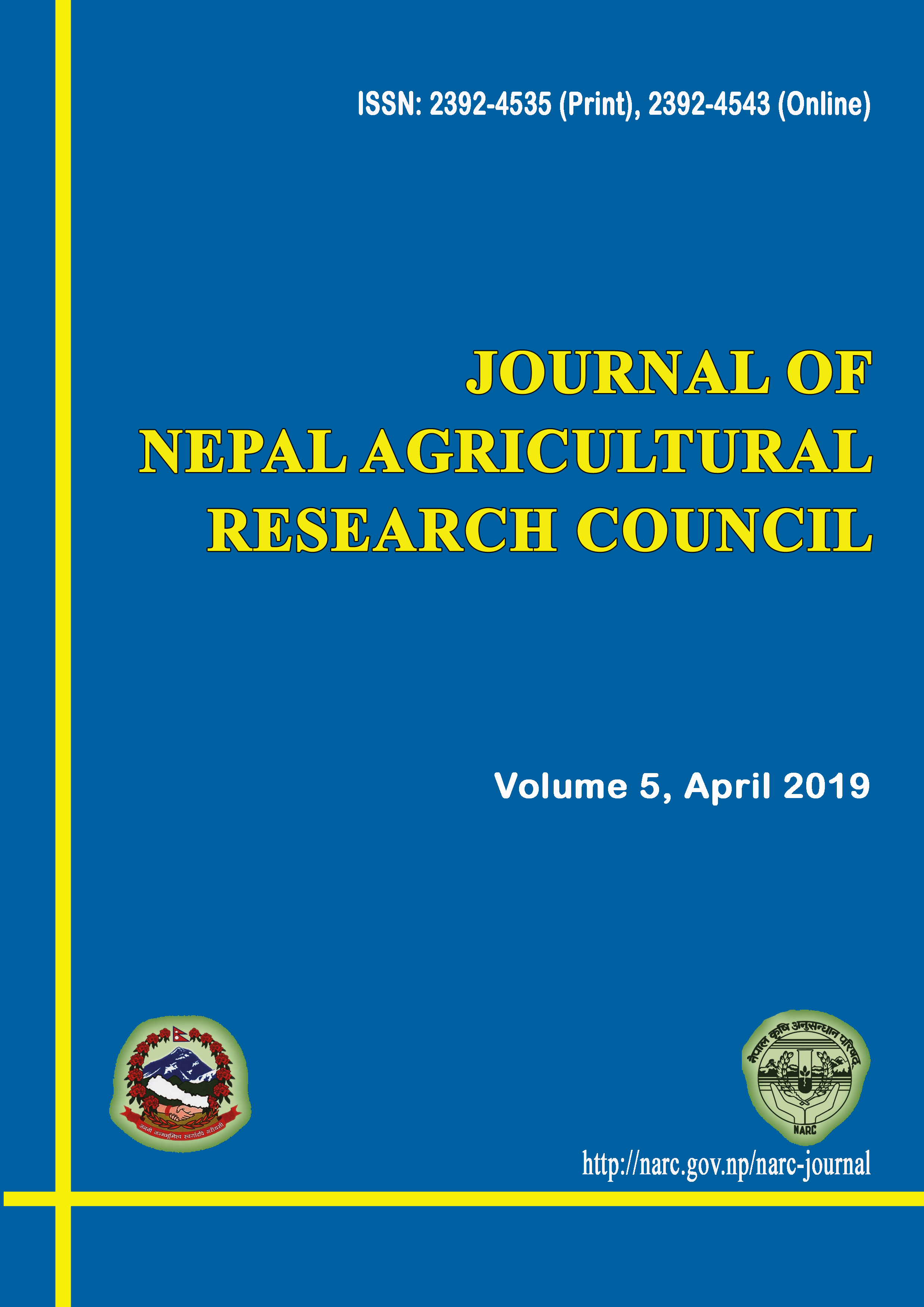In-vitro Evaluation of Botanicals, Fungi-toxic Chemicals and Bio-control Agent for Efficacy against Turcicum Leaf Blight of Maize
DOI:
https://doi.org/10.3126/jnarc.v5i1.23811Keywords:
Biological Control, Exserohilum turcicum, fungicides, mycelial inhibition, plant extractsAbstract
Maize is the second most important cereal crop of Nepal. Its growth and production is severely affected by Turcicum leaf blight caused by Exserohilum turcicum at pre-harvest stage. A total of 6 botanicals, 4 chemical fungicides and 1 bio-control agent were evaluated for efficacy against Exserohilum turcicum under in vitro conditions following poisoned food technique at National Maize Research Program, Rampur, Nepal. The experiment was carried out in a completely randomized design with 5 replications. All the tested botanicals, fungicides and bio-control agent exhibited fungicidal action and significantly inhibited mycelial growth of the test pathogen over untreated control. Among botanicals, extract of Acorus calamus L. at 1% W/V checked the pathogen growth completely in-vitro. The mycelial growth inhibition percent of Artimisia indica Willd, Lantana camera L., Allium sativum L., Xanthoxylum armatum DC., and Azadirachta indica A. Juss. at the concentration of 2.5% W/V on PDA was 75.18%, 74.00%, 44.68%, 44.21% and 37.59% respectively. Among fungicides, the mycelial growth inhibition percent of E. turcicum due to ACME-COP (Copper oxychloride 50% WP), SAAF (Carbendazim 12% + Mancozeb 63% WP), Dithane M-45 (Mancozeb 75% WP) and Bavistin (Carbendazim 50% WP) at the concentration of 1000 ppm on PDA was 70.69%, 68.44%, 61.23%, and 60.52% respectively. Antagonist Trichoderma viride developed more rapidly than E. turcium in single as well as in dual cultures. T. viride caused significantly inhibition of 35% of the pathogen E. turcicum on the 5th day of incubation. These results have important implications for the management of turcicum leaf blight disease in maize.
Downloads
Downloads
Published
How to Cite
Issue
Section
License
This license enables reusers to distribute, remix, adapt, and build upon the material in any medium or format for noncommercial purposes only, and only so long as attribution is given to the creator.




